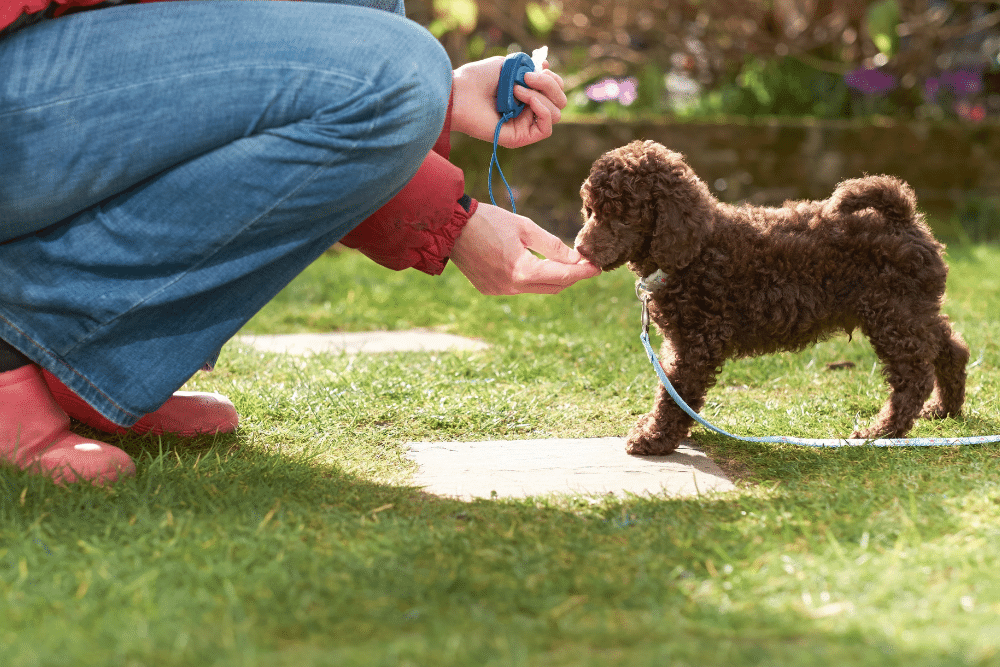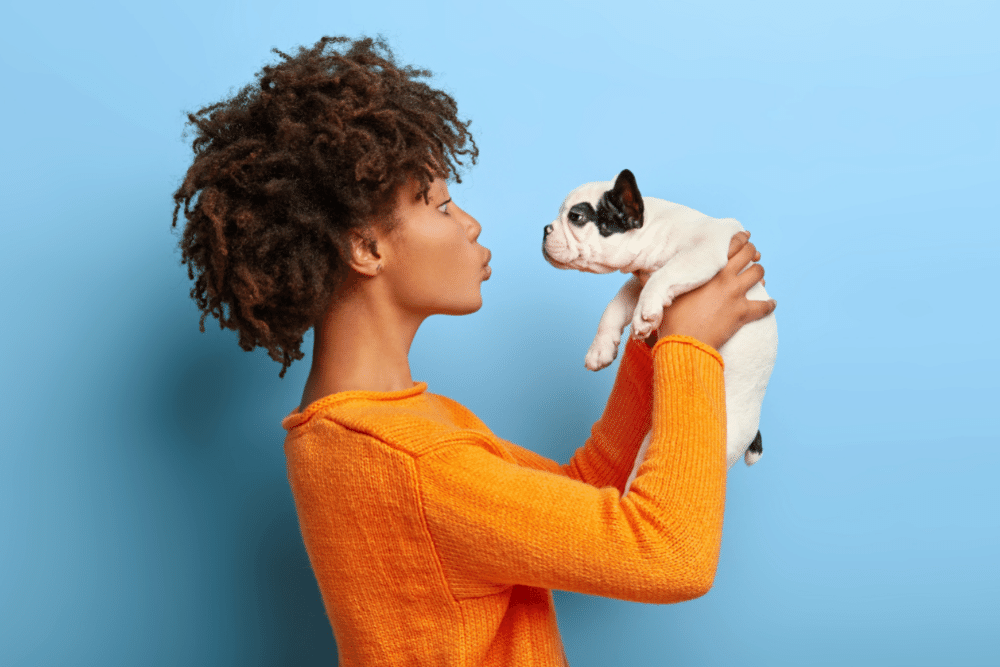So you’ve taken the plunge. You’ve done your breed-&-gender reveal party. You’ve stocked the toy box and put a name-embroidered bed by the fireplace. And today’s the big homecoming. But oh, you forgot. What are you going to do about dog training…for puppies, no less? So let’s get started training your puppy.
They’re little. They’re ‘dorbs. They have perfect pink noses and paw pads…and that unmistakable puppy breath you can smell through your phone screen.
They also have no clue what they’re doing or what’s expected of them…until you teach them.
Bringing a puppy into your life and home is fraught with responsibility. You’re making a lifetime commitment (albeit in dog years), and you need to be prepared for life-beyond-cuteness.
Even when and where you adopted your puppy can influence his adaptation to a new life and ultimately to dog training.
For puppies, the tragic reality is that far too many are the products of puppy mills.
And many are taken from their mothers and litters too early. This deprives both pups and mama of critical weaning, comfort, teaching/learning, and same-species socialization time.
A puppy’s time spent with its mama and littermates is critical to his entire future.
Early socialization extends from 3 to 12 weeks of age for puppies.
The 3-to-5-week age is known as primary socialization. This is the most influential period of a puppy’s life relative to social behavior patterns and learning.
Many fear-based and behavioral issues can be traced back to interruption, neglect, or malpractice during the critical early socialization period.
In many ways, becoming a human pet parent is really a taking-of-the-torch from your puppy’s biological mama or “dam.”
Whether you have helped save a life by rescuing a puppy or have worked with a reputable breeder, you now have this little bundle to raise.
And those quintessential puppy-dog eyes are looking at you for more than love.
They’re looking at you for guidance.

Training a Puppy
A few years from now, you may be amazed at all the words, commands, and tricks your dog knows.
But these early days need to focus on the essentials to build a foundation of trust, safety, and good manners.
Socialization to people, animals, settings, and sensory experiences must be an ongoing practice, regardless of command-based training, which also needs to start early.
Among the essential dog training commands are a few that are critical to the others…and even to your pup’s safety.
Getting Started
Long before you work on things like leash training and dog heel, you need to be able to get and hold your puppy’s attention. This is the motivation behind the simple command “look” or “watch me.”
Other commands like “come,” “leave it,” and “drop it” – and especially emergency recall – can actually prove to be lifesaving. They should be developed and practiced early in your ongoing training.
Dog training for puppies is built on the same principles as training for adult dogs. The difference is that you’re dealing with young, rapidly developing brains and little to no time spent in “the big human world.”
Think about how human children learn, despite a much longer timeline.
Human children need to be potty trained.
Canine “children” need to be house trained.
Human children need to learn to sleep and self-calm in their cribs.
Canine “children” need to learn to sleep and self-calm in their crates (even if their crates eventually become purely elective).
What’s important isn’t only what is taught, but how that “what” is taught.
Dog training methods abound, and you can learn about some of the most popular ones here.
It’s the use of positive reinforcement, however, that will set both Little Fido and his sleepless humans up for a happy life together.
Positive Reinforcement for Puppies

What positive reinforcement is not is the gratuitous dispensing of treats and affection for no reason. “There are no free treats in this house!” isn’t a mean-spirited approach to dog-parenting.
What positive reinforcement is is a non-confrontational approach to engaging with your dog’s brain to train desired behaviors.
Simply put, the positive reinforcement method is all about rewarding behaviors and rituals that are desired with something your dog loves.
A high-value treat, a desired toy, immediate affection – whatever your pup joneses for can be used for reinforcement.
But what about when he jumps or chews or pees on the carpet or doesn’t come when called? What do I do then?
As difficult as it may be to fathom, the behaviors you don’t desire don’t elicit your response. That doesn’t mean you “ignore” them. It simply means you don’t give them the energy you give to the behaviors you’re rewarding.
You can remove a toy or withhold the treat, but you don’t punish, yell, or rub your puppy’s nose in pee. And you don’t sentence him to his crate for time-out. His crate is meant to be a safe, calming place that he feels good about retreating to.
That means, however, that you need to be consistent, abundant, and immediate with positive reinforcement.
Dogs live in the moment, so rewarding this morning’s “sit” with a treat you buy on your way home from work isn’t going to cut it.
Final Noteworthy Mentions on Puppy Training
Dog training for puppies, like training for any animal, is equally about training for humans.
You will be faced with situations that don’t have their own chapter in your dog training manual.
And you will undoubtedly have moments of frustration and feelings of futility.
Assuming you have brought your puppy into your family for the right reasons, however, you have a strong foundation on which to build.
Embrace the uniqueness of your dog. Every animal, like every human, is its own divine creation.
Spend time with your new buddy. Learn all his/her gifts, quirks, likes, dislikes, fears, and sources of pride.
Give them the opportunity to show you who they are and they’re relying on you to help them become the dog they were born to be.
And look for every little opportunity to say, “Yes! Good boy!”
Oh, and don’t forget the treat.








